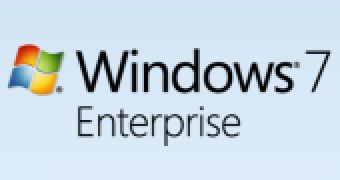Microsoft is offering customers interested in migrating to Windows 7 an upgrade to a tool specifically designed to assist them as they introduce the operating system in their infrastructure.
For the time being, Microsoft Enterprise Desktop Virtualization (MED-V) 2.0 is available in Beta stage, through Microsoft Connect, and early adopters will need to register and fill in a survey in order to participate in the testing program.
But with this release, the Redmond company is making good on its promise to deliver a Beta of the next generation of Microsoft Enterprise Desktop Virtualization in the fourth quarter of 2010, noted Karri Alexion-Tiernan, Director of Product Management for Microsoft Desktop Virtualization.
“MED-V is a bridge to help you create a longer term plan for your more complex applications that may not be compatible with Windows 7 and are too costly to migrate at this exact moment,” Alexion-Tiernan added.
“MED-V can accelerate your migration to Windows 7 by removing legacy application barriers. "
“It delivers a seamless user experience, consolidates legacy desktop hardware and allows users to access the legacy applications from a single desktop experience. It also enables the business to move all desktops to a better performing, more secure operating system, Windows 7.”
Enterprise customers looking to make the move to Windows 7 will need to evaluate their environments for any issues which could prevent migration.
MED-V is designed to assist customers in assessing such critical details as application compatibility with the new operating system.
According to Alexion-Tiernan, MED-V is capable of separating the operating system from applications, but also from data and user settings.
Obviously, Microsoft has been collecting user feedback on the previous versions of the migration solution and built MED-V 2.0 accordingly, with such new enhancements as one-time sign on to the MED-V workspace.
Customers deciding to leverage version 2.0 of MED-V will only be required to re-enter their password in the eventuality that they changed their Windows password.
“In addition, we recognize that more infrastructure is not always better so we’ve enabled you to leverage your existing software distribution system as the delivery mechanism for the MED-V workspaces,” Alexion-Tiernan added.
“This means that System Center Configuration Manager integration was a priority for us as we want to extend the value of the infrastructure you already have."
“Last but certainly not least, customers told us that they are moving toward virtualization of their applications as their primary strategy for the future. "
“Naturally, they want to be able to use App-V in conjunction with MED-V so that they have a consistent packaging methodology, regardless of the target."
“Now, App-V and MED-V are fully tested together and virtual apps can be deployed and managed within the MED-V 2.0 Beta workspaces.”

 14 DAY TRIAL //
14 DAY TRIAL //